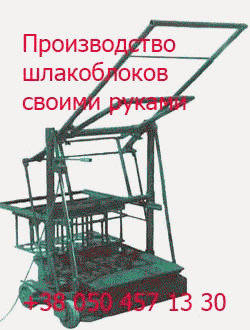Common methods used to measure sediments are manual testing, sedimentation balance, radioactive methods, dipping of bodies, and probe tools. The special measuring equipment known as the Bayer system [1.97] can test for deposits with great accuracy and good reproducibility. The force acting on a needle probe which penetrates into the coating material from above is […]
Архивы рубрики ‘Industrial Inorganic Pigments’
Change in Tinting Strength, Half-Life Times, and Increase in Strength
 12 сентября, 2015
12 сентября, 2015  Pokraskin
Pokraskin For standards see Table 1.1 (“Change in strength”). Dispersibilities of pigments may be compared by means of their dispersing resistance; dispersing equipment may be characterized by means of dispersing effects. Measurement can be based on the determination of half-life times in relation to the final tinting strength. The increase in strength, however, only gives the […]
High-Viscosity Media (Pastes)
 12 сентября, 2015
12 сентября, 2015  Pokraskin
Pokraskin The dispersion properties are determined with an automatic muller. The advantage is that small amounts of material can be simply tested under reproducible conditions. For standards, see Table 1.1 (“Ease of dispersion: Automatic muller”). Development of Fineness of Grind The quantity measured is the dispersing effect needed to achieve a given fineness of grind. Samples […]
Dispersing Behavior in Paint Systems Low-Viscosity Media
 12 сентября, 2015
12 сентября, 2015  Pokraskin
Pokraskin The time that is required to produce a homogeneous suspension of particles in the dispersion medium using an oscillatory shaking machine equipped with several containers is measured. Not only can small quantities of the millbase with the same composition be tested (as with other types of apparatus), but various millbases can also be tested under […]
Fineness of Grind
 11 сентября, 2015
11 сентября, 2015  Pokraskin
Pokraskin fineness of grind The grind gauge (grindometer) consists of a steel block with a groove. The depth of the groove at one end is approximately twice the diameter of the largest pigment particle, and decreases continuously to zero at the other end. The sample is placed at the deep end of the groove and drawn […]
Viscosity
 11 сентября, 2015
11 сентября, 2015  Pokraskin
Pokraskin Viscosity is a useful parameter for coatings applied by brushing. It is determined by measuring the torque applied to a rotating cylinder or disk in or on the surface of a suspension. This method is applicable to Newtonian and non-Newtonian systems. In non-Newtonian suspensions, the apparent viscosity is obtained by dividing the shear stress by […]
Binder Absorption, Smear Point, and Yield Point
 10 сентября, 2015
10 сентября, 2015  Pokraskin
Pokraskin [1.92] Smear point and yield point are used to determine the binder needed to formulate a suitable millbase for grinding by dissolvers, roll mills, ball mills, attritors, sand mills, and pearl mills. The amount of binder is given in volume or mass units. Apparatus: rough glass plate, spatula with steel blade.
Test Methods
 9 сентября, 2015
9 сентября, 2015  Pokraskin
Pokraskin 1.5.2.1 Pigment-Binder Interaction Oil Absorption The oil absorption gives the mass or volume oflinseed oil required to form a coherent putty-like mass with 100 g pigment under specified conditions. The mixture should just not smear on a glass plate. For standards, see Table 1.1 (“Oil absorption”). Materials and apparatus: rough glass plate, spatula with steel […]
Behavior of Pigments in Binders
 9 сентября, 2015
9 сентября, 2015  Pokraskin
Pokraskin 1.5.1 Fundamental Aspects [1.77, 1.78] A pigment-binder dispersion is a suspension before it is dried; after drying it is a solid sol. In pigment-binder systems, the concepts and laws of colloid chemistry therefore apply. The dispersing of pigments and extenders in binders is an extremely complex process consisting of a series of steps that can […]
Resistance to Spittle and Sweat
 9 сентября, 2015
9 сентября, 2015  Pokraskin
Pokraskin This test indicates whether a pigment on a child’s colored toy is likely to be transferred to the mouth, mucous membranes, or skin during use. Strips of filter paper are wetted with NaHCO3 and NaCl solutions and pressed against the test samples. The discoloration of the paper is judged visually. For standards, see Table 1.1 […]
 Опубликовано в рубрике
Опубликовано в рубрике 
